|
 |
|
Large scale electricity
distribution became a reality in South Staffordshire
with the formation of the Midland Electric Corporation
for Power Distribution, in June 1897. Thomas Parker was
the creative genius behind the venture and the
Corporation’s chairman was Wolverhampton engineer, J. F.
Allbright. In 1898 it was granted Provisional Orders to
supply a number of the local towns, including Bilston,
Brierley Hill, Coseley, Cradley Heath, Darlaston, Heath
Town, Kingswinford, Old Hill, Rowley Regis, Sedgley,
Short Heath, Tipton, Wednesbury, Wednesfield, and
Willenhall.
The M.E.C. was the first company to
get Statutory powers to distribute electricity over such
a large and varied area. A power station was built on 14
acres of land at Ocker Hill to supply electricity. It
was near to a coal mine and by the side of the Walsall
Branch of the Birmingham canal, with access to Toll End
Road. Sub stations were built at Bilston, Brierley Hill,
Darlaston, Old Hill, Tipton and Wednesbury. Some local
councils, including Tipton and Wednesbury decided to
distribute the power themselves, whereas others left it
to the Corporation.
|
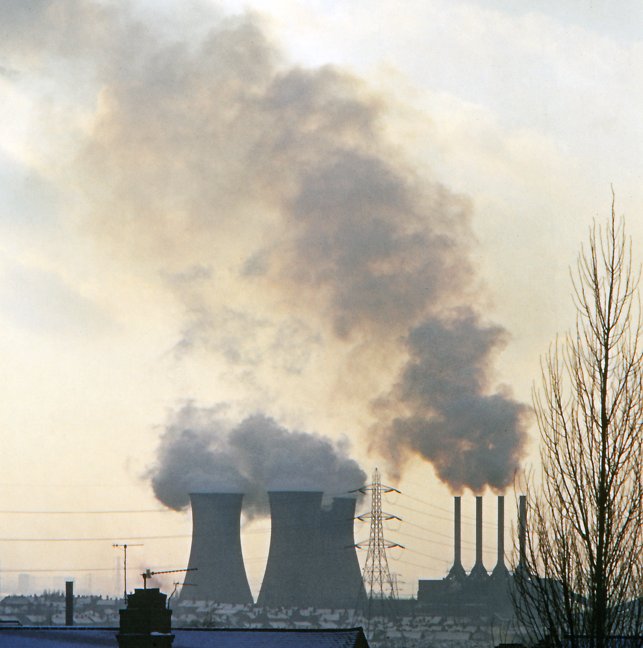
Ocker Hill Power Station, seen from Darlaston
in the early 1970s.
|
The power station produced a
primary supply of two phase A.C. at 7,000 volts, 50
hertz, which was reduced to 200 volts at the sub
stations. The estimated cost of the power
station was £83,000. Power station staff included James Hardie McLean, General Manager and Chief Engineer;
Charles Stewart, Mains Superintendent; and George
Reginald James Parkinson, Resident Engineer. Electricity
was being produced by June 1902. The plant consisted of
two Ferranti 1,200 hp. vertical compound steam engines,
directly coupled to 800kW flywheel alternators with
belt-driven exciters. Steam at 160 psi. was provided by
eight Babcock water tube boilers. In 1903 a Yates & Thom
3,000 hp. vertical compound steam engine and a Ferranti
1,500kW flywheel alternator were added.
The company was unprofitable until
1914 when its first dividend was paid. In some parts of
the area, problems arose due to subsidence from mining.
In those areas, "loop pits" were built every 200 yards
to prevent the mains cables being broken. Each "loop
pit" contained 6 yards of slack cable. The cable in
between the pits was enclosed in solid pipe work.
|
|
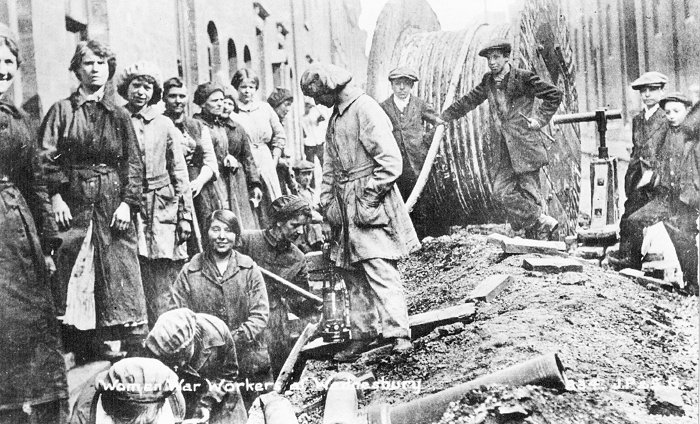
Laying a mains cable from
Darlaston to Ocker Hill in 1917. From an old postcard. |
|
The M.E.C. changed considerably as
a result of the passing of the 1919 Electricity Supply
Act that established five joint authorities to oversee
and regulate electricity generation. In January 1928,
one of the new authorities, the West Midlands Joint
Electricity Authority purchased the generating side of
the business, and acquired control of Ocker Hill and the
power stations at Wolverhampton, Birchills (Walsall),
and Black Lake (West Bromwich). The four power stations
were quickly interconnected with a 33,000 volt supply
network so that they could assist one another at times
of high demand. From then on, electricity generation and
distribution in the West Midlands were controlled
separately. The M.E.C. continued to run the distribution
system, but had lost control at Ocker Hill.

The new generating
plant installed for the West Midlands Joint
Electricity Authority. From the Express &
Star, 15th May, 1929. |
The National Grid was established
around the same time, with a network of 132,000 volt,
overhead lines. In about 1932 a sub station was built at
Ocker Hill to connect the power station to the National
Grid.
|
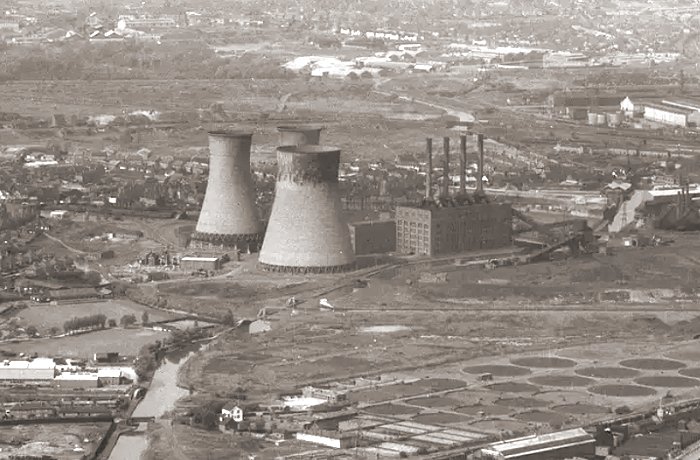
The power station in 1964.
|
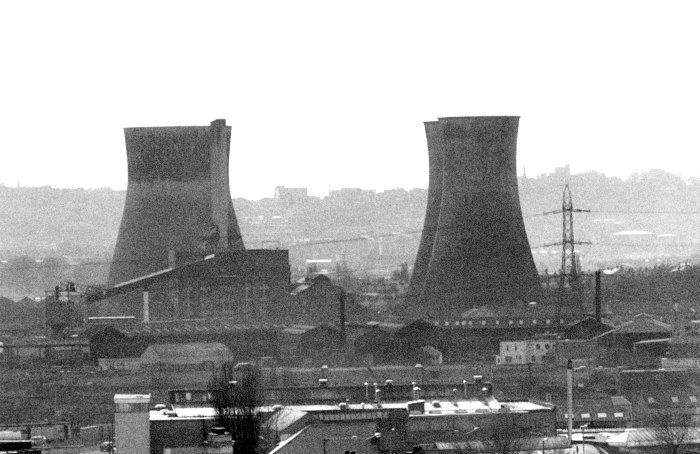
The power station, seen from
Church Hill, Wednesbury, in the early 1970s. |
|
The demand for electricity from
Ocker Hill and the other local power stations was
reduced with the building of the 200 MW power station at
Ironbridge, which opened in 1932. By that time the plant
at Ocker Hill was out of date, and extremely inefficient
when compared to the modern plant at Ironbridge. Because
of the drop in demand, the number of staff at Ocker Hill
was reduced. It is possible that the power station might
have closed if it wasn’t for the outbreak of war in
1939.
In the late 1940s, as the demand
for electricity grew, much of the plant at Ocker Hill
was scrapped and replaced with two 30 MW BTH generators
and five Babcox and Wilcox boilers. The power station
then had a capacity of 84.5 MW. In 1947 the first two of
the concrete cooling towers was built.
The industry was nationalised in
1948 and Ocker Hill power station came under the control
of the Midlands Division of the British Electricity
Authority. The M.E.C. then became part of the Midlands
Electricity Board, known as the MEB.
|
|
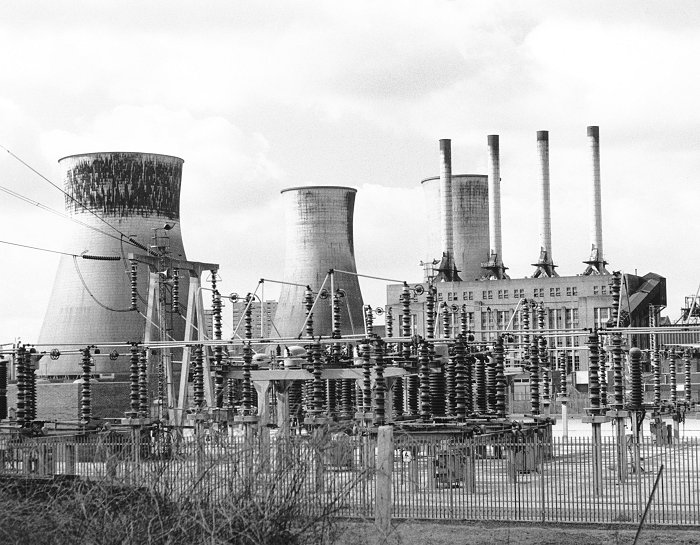
The power station in 1984. |
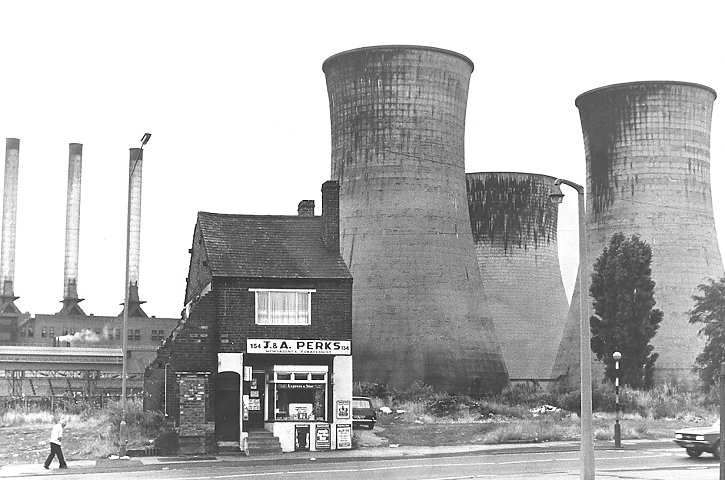
|
In the mid 1950s, two new generators
were installed, along with extra boilers and a third
cooling tower, to increase the station’s capacity to 120
MW. The power station was extremely reliable and gave
many years of trouble-free service. In September 1960,
coal ceased to arrive by canal boat. By that time there
were extensive railway sidings on the site and the
station owned two locomotives. It was more economical to
transport coal by rail. The canal boats couldn’t cope
with the high demand.
A 280 MW gas turbine generating
station was added to the site in 1972, powered by two
Olympus jet engines. Although the generating costs were
much higher than the existing steam plant, it could be
put on line in just a few minutes and required only a
small number of operating staff. By this time the demand
for electricity had fallen and many of the older and
smaller power stations closed, including the
steam-powered station at Ocker Hill. In 1976 around half
of the plant was shut down, the other half ended its
working life on the 20th March, 1977. The staff were given
voluntary redundancy or transferred to other
sites. A few of them joined the team at the gas turbine
station which remained open until 1996.
|
|
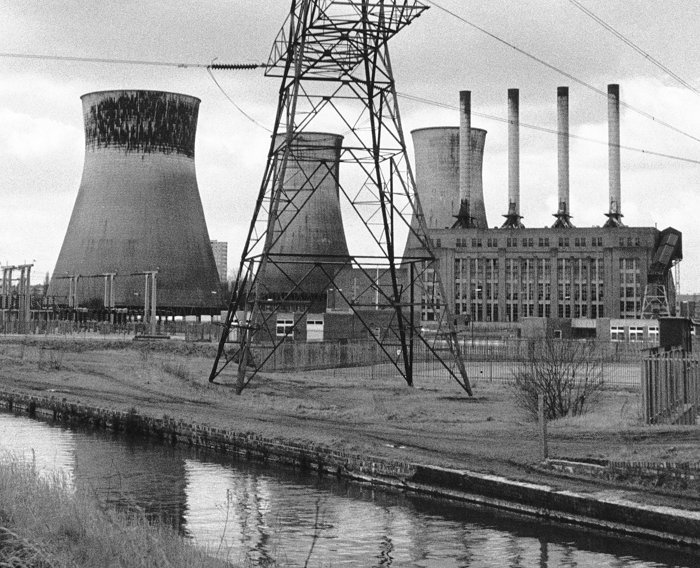
Another view from 1984. |
|
Demolition of the old power station
took several years. The cooling towers, once a prominent
landmark were demolished in August and September 1985.
Many people were sad to see them go. The site is now
occupied by a housing estate.
|
 |
Return to
the
previous page |
|